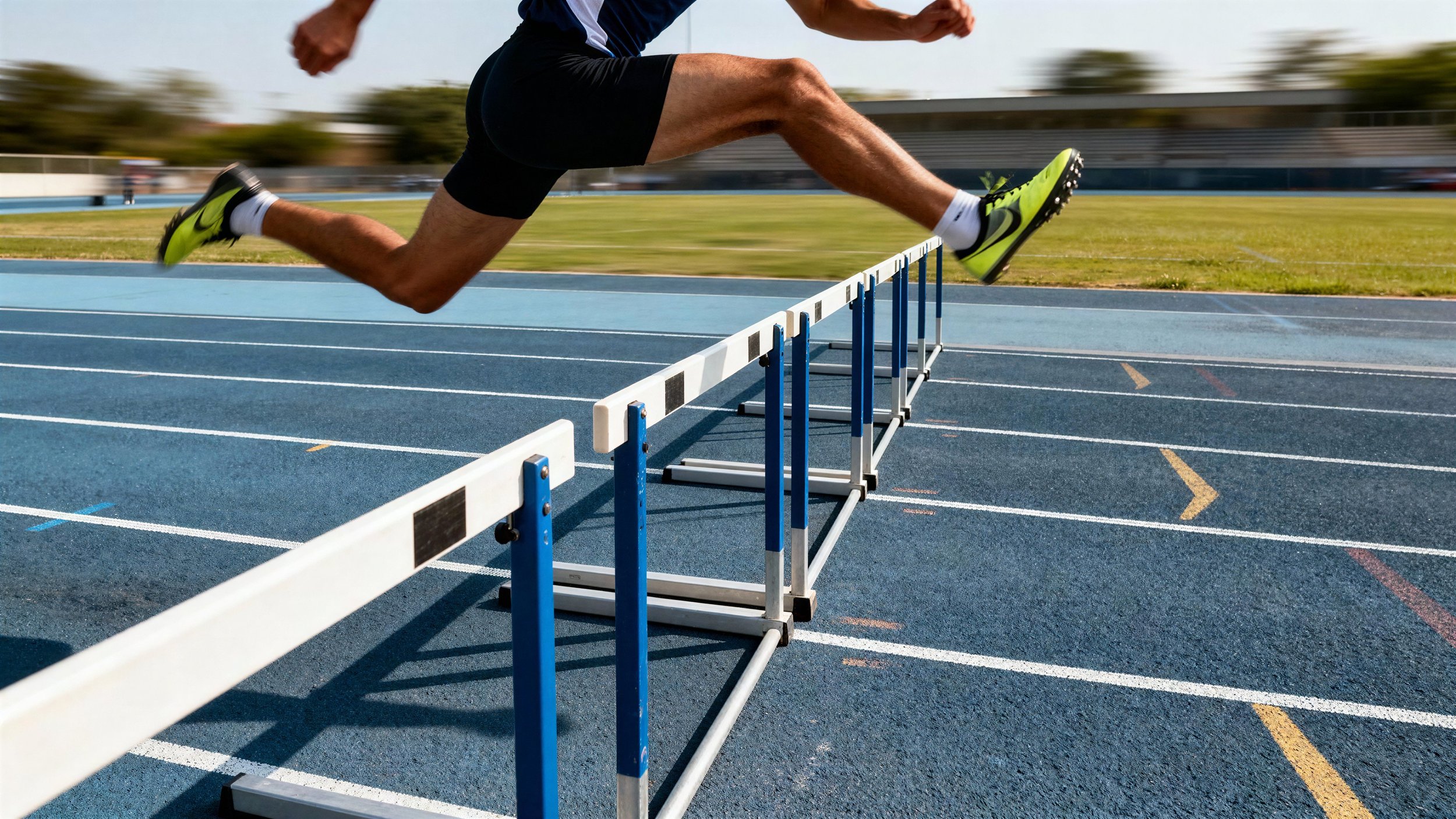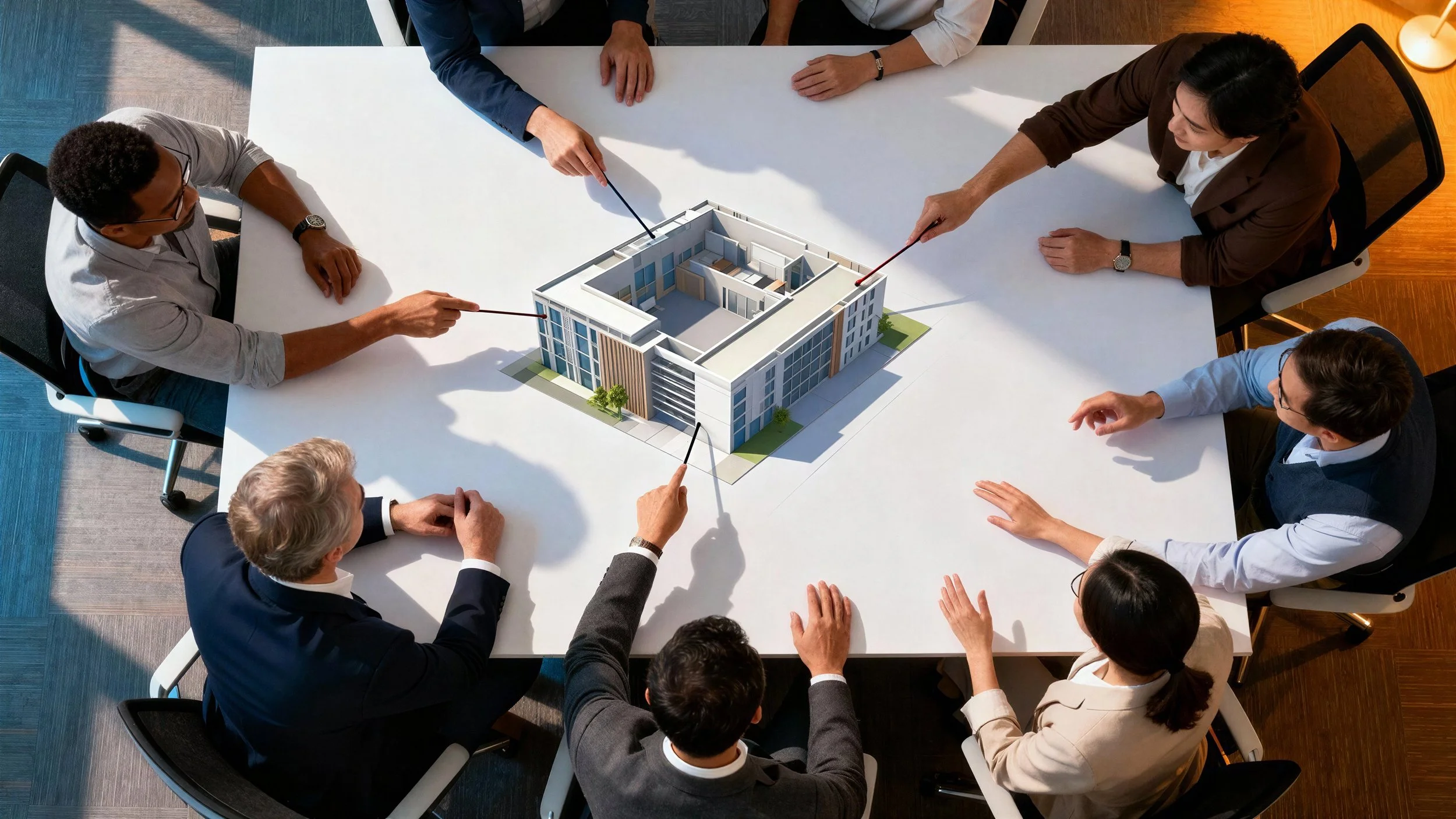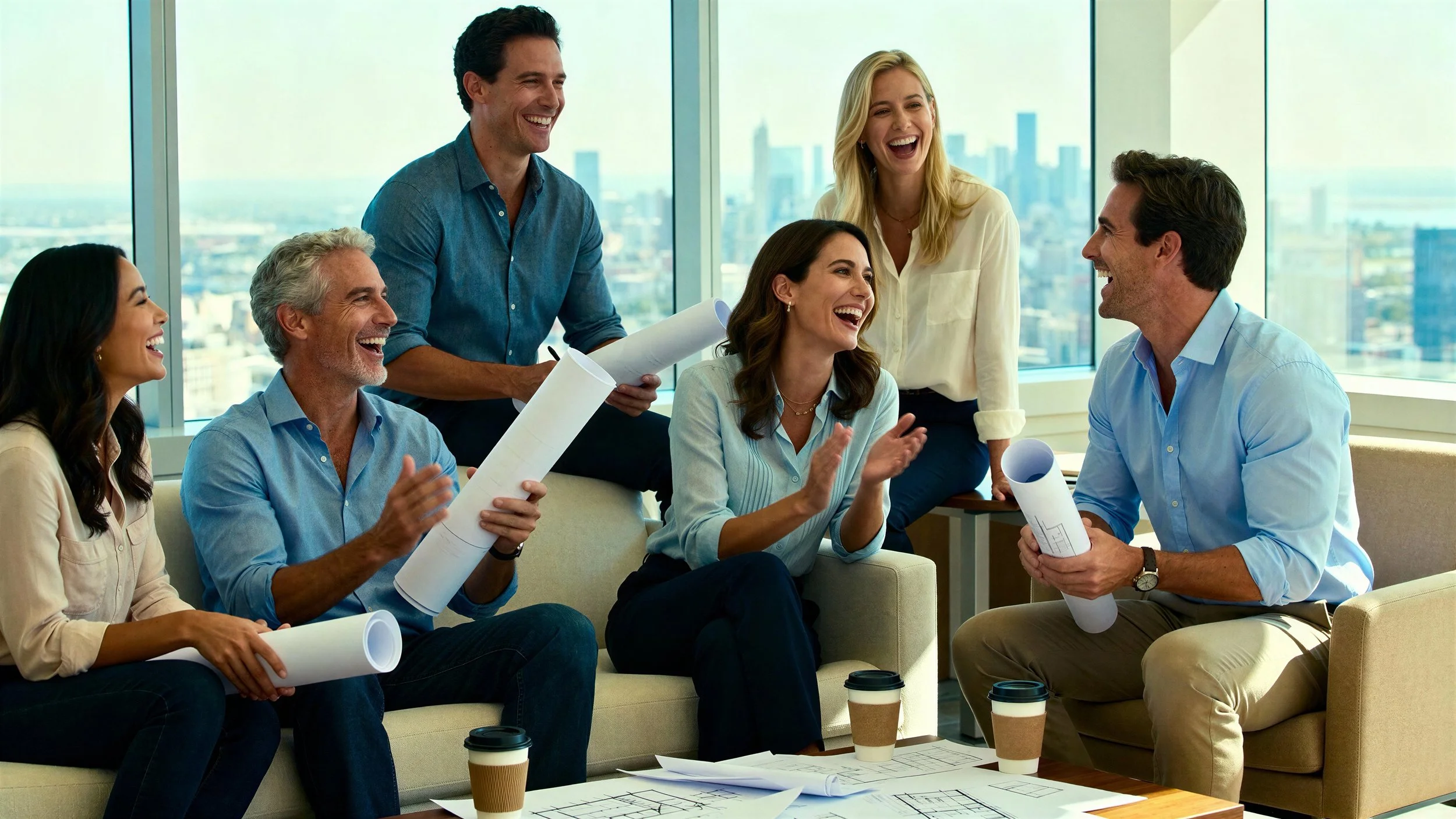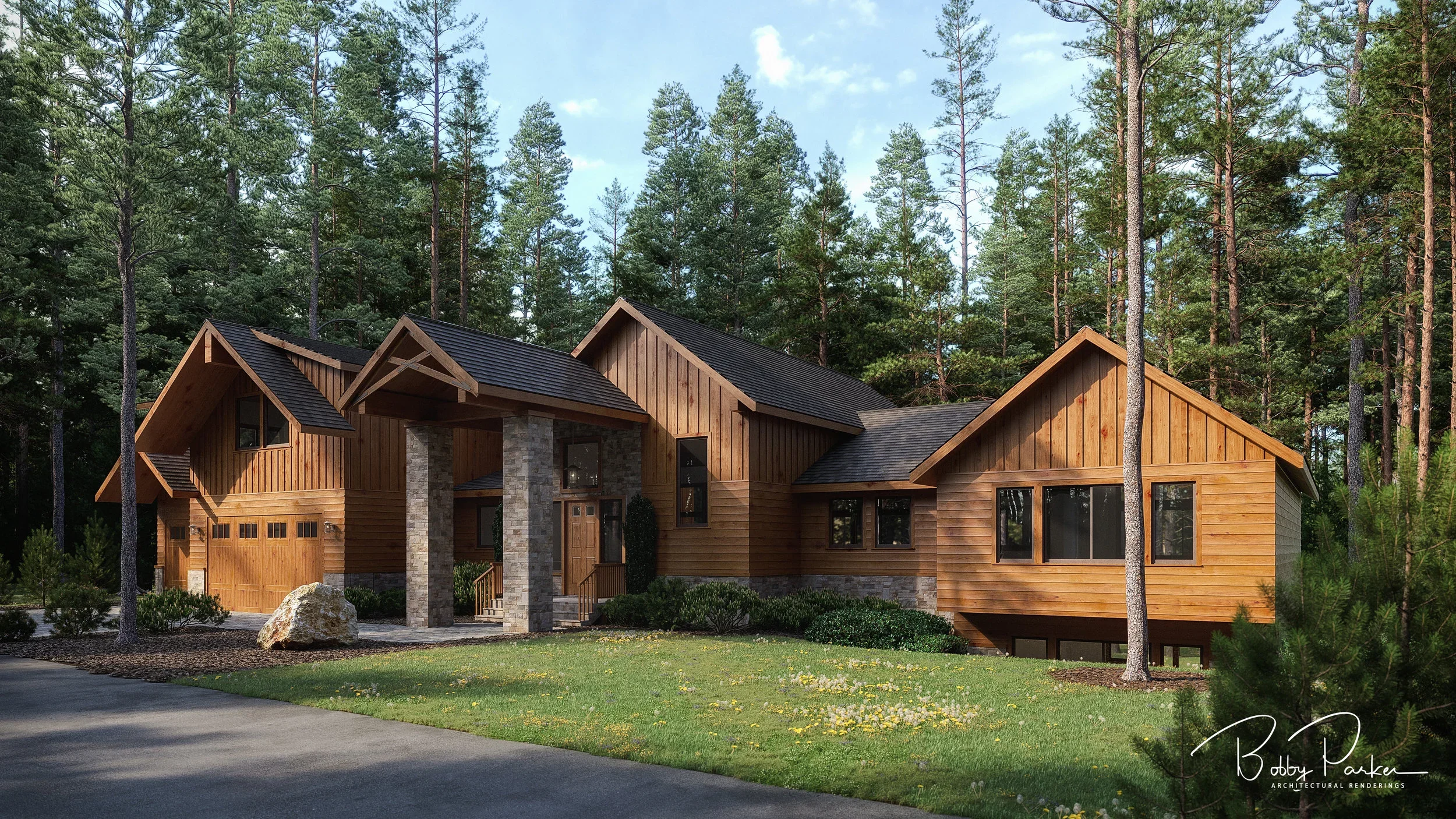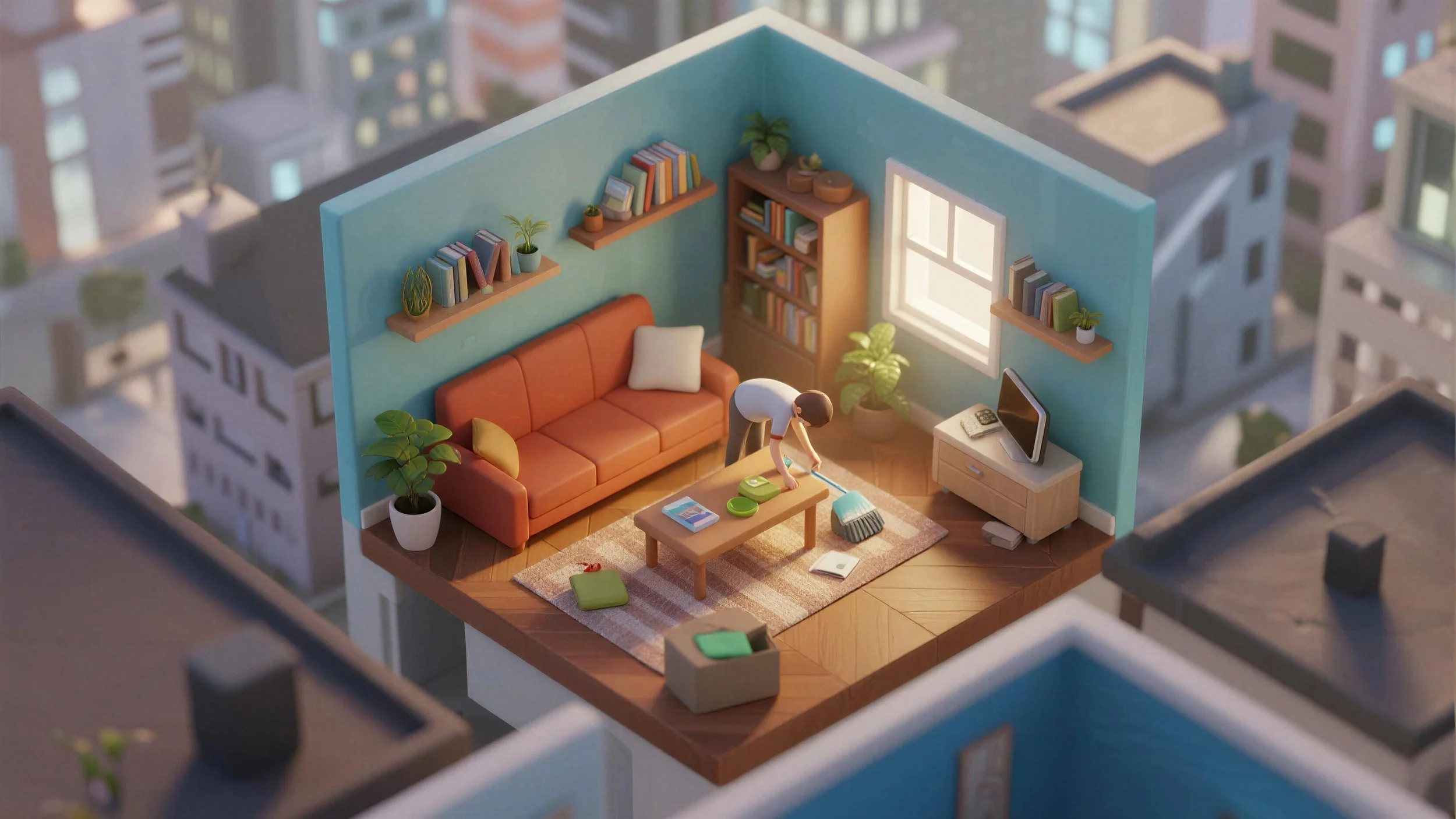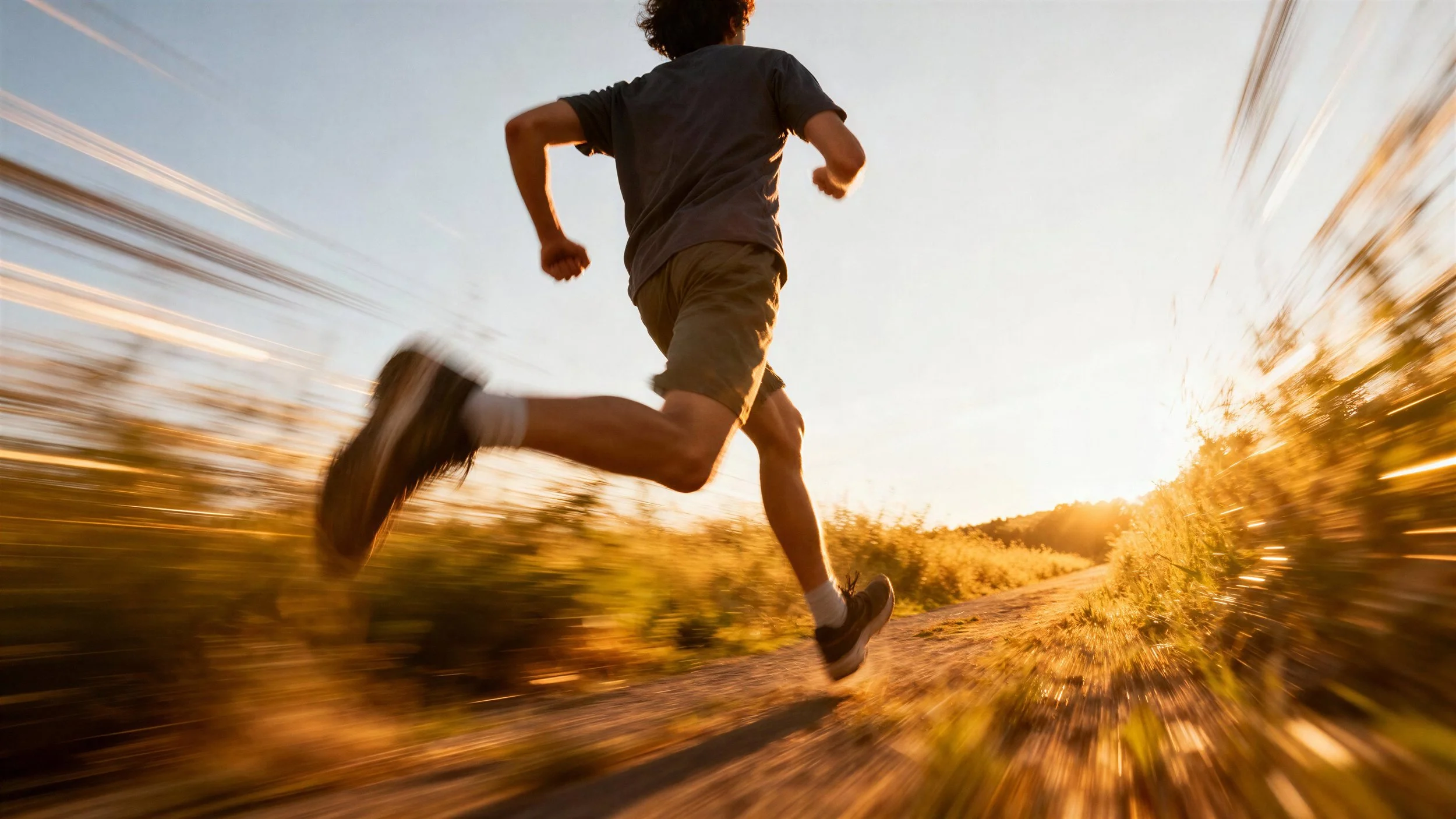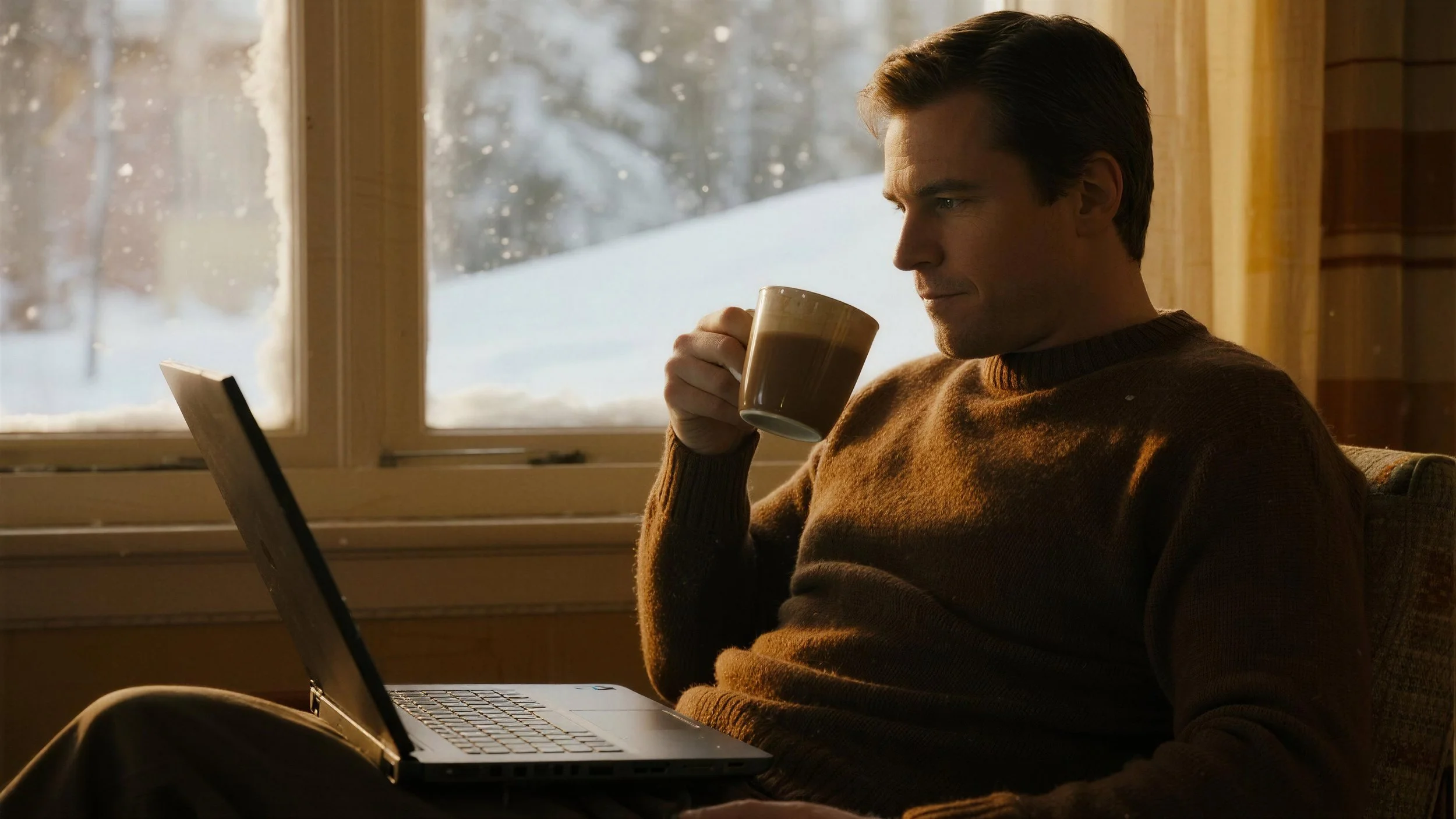BLOG
Christmas Greeting
Dear Friends,
As this year draws to a close and Christmas approaches, there is deep gratitude for the privilege of serving you on your projects. Your trust in these renderings and visualizations is never taken for granted, and each collaboration has been a genuine gift.
Christ-centered message
At Christmas, Christians celebrate the birth of Jesus Christ, the genuine Light who entered our world to bring hope, peace, and salvation. This season is a reminder that God chose to enter human history in the humility of a manger, showing that no life and no work is too ordinary for His presence.
Just as architectural design begins with a clear vision before anything is built, Christmas reminds us that God had a redemptive plan from the foundation of the world, fulfilled in Christ’s coming. May this truth inspire renewed hope and purpose in your work and life.
Gratitude for your partnership
Thank you for allowing these renderings to be part of the stories you are shaping—homes, workplaces, ministries, communities, and cityscapes. Highlighting your trust helps strengthen our relationship and shows genuine appreciation for our collaboration.
Your feedback, ideas, and support have helped refine this craft and push toward ever better, more meaningful visuals. It is a blessing to partner with you in communicating the beauty and intention behind each design.
Blessing for Christmas and the New Year
This Christmas, may you and your loved ones experience the peace of Christ, which transcends all understanding, guarding your hearts and minds in Him. Reflect on His presence filling your home with rest, joy, and warmth, strengthening your faith and connection.
As the new year begins, may God bless your projects, lead your teams, and guide your communities. May He grant wisdom for every decision and creativity for each new design, deepening your trust in His plan.
Closing and signature
With sincere thanks for your partnership and support, and with every blessing in Christ this Christmas and beyond,
Bobby Parker
www.Bobby-Parker.com
Architectural illustrations face significant hurdles
Architectural illustrations face significant hurdles in achieving photorealism under tight deadlines and client pressures. Recognizing these challenges can help professionals feel more confident in their capacity to adapt and improve quality despite constraints.
Key Challenges
Tight deadlines are the most frequent issue, leading to suboptimal outputs in 3D rendering projects. Achieving photorealistic accuracy demands precise textures, lighting, and details, yet software limitations, such as rendering speed, and hardware constraints, such as GPU capacity, hinder efficiency. Client expectations for rapid iterations exacerbate these pressures, requiring constant revisions.
Technical Hurdles
Rendering errors like incorrect perspectives, texture mismatches, and lighting issues can be frustrating. Staying up to date with evolving software and standards can empower professionals to feel more competent and resilient in overcoming technical hurdles.
Client and Workflow Issues
Unclear client feedback triggers repetitive changes, delaying projects. Effective planning and clear communication can help professionals feel more in control and reduce the exhaustion caused by scope creep and tight schedules.
The biggest challenge in architectural illustration is balancing photorealistic quality with relentless time and budget pressure. Tight deadlines, demanding clients, and complex tools all collide, easily compromising both creativity and accuracy.
The Race Against Time
Architectural visualization projects almost always come with aggressive schedules. Studios are asked to produce high-end imagery early in the design process, often before plans are finalized, leading to rushed modeling, lighting, and texturing. The result is a constant trade-off between hitting the deadline and investing the extra hours that true craftsmanship requires.
Demanding Photorealism
At the same time, expectations for realism keep rising. Clients compare commissioned work to glossy marketing images and game engines, expecting perfect lighting, materials, landscaping, and people—often on a schematic design fee. Achieving that level of detail requires meticulous scene setup and iteration, from precise dimensions to believable context, which is inherently time-consuming.
Technical Landmines
Modern workflows rely on CAD, BIM, and multiple render engines, and every handoff is a chance for something to break. Wrong dimensions, misplaced elements, missing textures, or lighting leaks can creep in during translation between platforms and file formats. Fixing these "invisible" issues consumes hours that were never in the schedule and erodes the project's margin.
Communication and Scope Creep
Even a flawless image can miss the mark if the brief is vague. Many clients struggle to visualize space, so feedback may shift dramatically once they see the first renders, triggering extensive revisions. Establishing clear scope agreements, using detailed contracts, and setting revision limits can prevent scope creep. When those extra rounds are not clearly scoped or priced, scope creep quickly turns a profitable commission into unpaid overtime and creative burnout.
Finding a Sustainable Balance
Overcoming this challenge means tightening every part of the process: clearer briefs, better reference gathering, and upfront alignment on style, budget, and number of revisions. Clever use of templates, asset libraries, and emerging AI tools can accelerate routine tasks so illustrators can focus on composition, storytelling, and that final layer of polish that sells the design.
Architectural Hotel Renderings: High-Quality 3D Visuals for Hospitality Projects
This hotel rendering is more than a pretty picture; it is a technical tool built directly from the construction drawings so the community can see what is truly being proposed, not a guess or an AI fantasy.
Why accuracy matters
An accurate rendering translates dimensions, materials, heights, and site grading from the construction and civil drawings into a visual language everyone can understand.
When the image matches the drawings, residents, planning staff, and elected officials are all looking at the same project, which reduces confusion and misplaced opposition.
Precise visualization also helps anticipate issues such as traffic flow, entrances, lighting, and how the building interfaces with the sidewalk, long before construction begins.
Role in public trust
Public meetings work best when people feel they are being shown the real project; a rigorously built rendering signals transparency and respect for the community’s time.
Clear visuals allow neighbors who are not design professionals to ask concrete questions about scale, parking, landscaping, and shading, rather than trying to interpret technical drawings on their own.
This level of clarity helps decision‑makers weigh benefits and impacts confidently, which can streamline the approval process and reduce costly redesigns later.
AI-generated images often lack the precise details and dimensional accuracy of CAD-based renderings, which are essential for understanding real project scope and design intent. Clarifying these differences helps stakeholders appreciate why professional renderings are more trustworthy for decision-making. AI-generated images are not dimensionally reliable; they can change window sizes, floor counts, and even street slopes from one image to the next, with no link to actual construction documents.
These tools often introduce details that look plausible but are structurally impossible, code‑noncompliant, or inconsistent with zoning and accessibility requirements.
In a public town meeting, such speculative imagery can mislead residents, undermine trust, and provide no solid basis for evaluating real-world impacts.
Value of a professionally built rendering
A professional, CAD‑accurate rendering becomes part of the project record, supporting staff reports, public notices, and future reference as the hotel moves through permitting.
It helps communicate the project’s benefits—such as improved streetscape, pedestrian experience, and economic activity—with visuals that can be tied directly back to the approved plans.
By investing in a high‑quality, drawing‑based rendering for this meeting, the development team is giving the community exactly what it deserves: an honest, buildable picture of what will actually be built on this site.
Why Architectural Renderings Must Be Quoted Per Project (and Why Flat Fees Don’t Work)
One of the most common questions architectural visualization studios hear is, “How much do you charge for a rendering?” While this question seems straightforward, it overlooks the service's complexity. Quoting per project, after a scope discussion, is essential because no two projects demand the same effort, expertise, or creative problem-solving.
Unlike commodities, architectural renderings are custom-built visual solutions. The scope can vary dramatically from one project to another. A single exterior image for a small residential remodel is vastly different from a full suite of marketing visuals for a significant mixed-use development. Factors such as project size, level of detail, design maturity, lighting conditions, landscaping complexity, entourage, and intended use (planning review, investor pitch, or high-end marketing) all influence the time and resources required.
Another critical variable is the quality expectation. Some clients need quick, conceptual imagery to communicate massing and layout. Others require photorealistic visuals that can withstand close scrutiny in sales brochures or on large-format displays. The difference between these two deliverables is not minor—it can mean many additional hours of modeling, texturing, lighting, and post-production.
Revisions are also a significant component of scope. How many design iterations are expected? Will the design evolve as the images are produced, or is it largely resolved? A flat fee cannot account for projects that require extensive back-and-forth versus those that move smoothly from start to finish.
When studios offer flat fees or respond to “how much do you charge” with a single number, it often leads to issues. Either the price is inflated to cover unknowns—causing clients to overpay for simple projects—or it's set too low, resulting in rushed work, limited revisions, or strained relationships when expectations aren't met.
Quoting per project, after a proper scope discussion, enhances transparency and alignment. It helps clients understand exactly what they are paying for and enables visualization teams to deliver the appropriate quality level without cutting corners. This approach also facilitates strategic conversations—prioritizing views, adjusting detail levels, or phasing deliverables to meet budget and timeline goals.
In short, architectural renderings are not one-size-fits-all. Treating them that way undervalues both the craft and the client’s objectives. A project-based quote ensures fairness, clarity, and better results for everyone involved.
Why Slow Seasons Are the Perfect Time to Refresh Your Marketing with New Architectural Renderings
Every business has slower seasons. The phones aren’t ringing as much, deadlines ease up, and projects take longer to get approved. While it’s tempting to wait things out, those quieter months can actually be the most valuable time to refresh your marketing materials—especially with updated architectural renderings.
High-quality architectural imagery does far more than decorate your brochures or website. It shows your commitment to excellence, making clients feel confident in your professionalism and attention to detail. When the market rebounds (and it always does), firms that already look sharp, current, and capable stand out immediately. Investing some time now in updating your visuals can put you several steps ahead of competitors still scrambling to catch up later.
Use this time to prepare your marketing assets by creating new renderings of past or current projects. Showcasing your evolving style or new service offerings can make a significant impact. If your firm has shifted toward sustainable designs or completed a standout project that wasn't appropriately featured, now’s the perfect opportunity to turn that story into a marketing asset—beautifully rendered and ready to promote across your website, proposals, and social media.
During slower periods, most rendering artists and marketing professionals also have more flexible schedules, allowing for more personalized attention and creative collaboration. This is your chance to experiment with different presentation styles—daylight and dusk versions, material studies, or even short animations—giving you a sense of control and ownership over your visual identity without the pressure of tight deadlines.
By the time inquiries start rolling in again, you’ll be ready with a portfolio that’s fresh, cohesive, and confidence-inspiring. Potential clients will see an active, forward-looking business rather than one that’s been waiting out a quiet spell, giving you reassurance about your readiness for market rebound.
When your project calendar is light, view it as a strategic opportunity rather than downtime. Updating your marketing materials now, especially with outstanding architectural renderings, is a clever use of resources and a proactive step toward future growth. This investment can help maintain your momentum and ensure you're ready for the busy season ahead.
When the market turns busy again (and it always does), you’ll already be poised for success—with visuals that make a lasting impression.
Photoreal Kitchen Rendering That Brings Your Pre-Construction Listing to Life
This rendering showcases a warm, modern kitchen that feels completely real, helping buyers feel an immediate emotional connection to a home that hasn’t been built yet. It allows them to picture everyday life here long before construction finishes, which is essential for making pre-construction listings more appealing and encouraging faster sales.
Space and layout
The image clearly communicates the open-concept flow from the living area into the kitchen, so buyers can understand proportions, sightlines, and how the island, seating, and circulation actually work in the space. This eliminates guesswork from floor plans and helps prospects decide quickly that “yes, this layout fits our lifestyle.”
Finishes and detailing
Every finish is rendered with photographic realism: the soft gray cabinetry, the subtle sheen on the countertops, the authentic subway tile, and the warm wood stools and beams all read exactly as they would in the finished home. This level of detail reassures buyers, helping them feel confident about their investment and empowering your design team to showcase upgrade options effectively.
Mood, lighting, and lifestyle
The natural daylight, soft reflections on the metal pendants, and the gentle glow at the backsplash create a welcoming, high-end atmosphere that still feels livable. Carefully staged props, artwork, and flowers help buyers imagine entertaining, cooking, and relaxing here, turning an abstract “future kitchen” into a lifestyle they want to own.
Value for your marketing
Since the rendering resembles finished photography, you can start marketing immediately across MLS, print, social media, and signage—long before the home is built, building early interest, supporting premium prices, and converting casual viewers into serious buyers.
Delays in Architectural Rendering Projects
Delays in architectural rendering projects frustrate clients and artists alike, often turning tight deadlines into extended timelines. Common culprits include unclear project scopes and last-minute changes that require rework. Clarifying project timelines and deliverables upfront helps prevent misunderstandings and manage client frustrations, making workflows more predictable.
Design Changes
Frequent revisions to the base model cascade through every rendering stage. Adjusting geometry, materials, or camera angles demands recalibrating lighting and textures, which can add days to production. Locking the design early helps clients feel involved and reassured that their input shapes the project, as even minor tweaks, like moving a window, can disrupt the entire scene composition.
Poor Communication
Scattered feedback from multiple stakeholders creates confusion and endless rounds of iteration. Without a single point of contact, artists chase conflicting inputs, halting progress until clarity emerges. Clear, focused communication—like limiting feedback to one review round—helps clients and managers feel heard and confident that their input is valued and will be effectively integrated.
Incomplete Files
Missing or inconsistent drawings, such as discrepancies in structural details or service layouts, force pauses for clarification. Incomplete contract documents exacerbate this, delaying approvals and modeling. Thorough pre-project checks ensure all assets align before rendering begins.
Technical Complexity
High scene complexity, such as intricate landscapes or dynamic lighting, can exponentially increase render times. Simple interior finishes can be completed quickly, but exteriors with vegetation, crowds, and reflections require powerful hardware and patience. Client indecision on quality levels—photorealistic versus stylized—further prolongs decisions.
External Factors
Supply chain issues for assets or unexpected hardware failures add unforeseen hurdles. Weather rarely directly impacts digital work, but scope creep from owner changes mimics real-world delays. Buffering schedules by 20% and planning for contingencies effectively helps manage external factors, reducing stress and delays.
Proactive planning mitigates most delays: define scopes upfront, centralize communication, and prioritize stable inputs. When clients and project managers see these steps, they feel empowered and in control, fostering trust and encouraging ongoing collaboration.
Using Architectural Renderings to Streamline City Approvals
Securing city approvals is one of the most critical—and often most challenging—phases of any architectural project. Zoning boards, planning commissions, and review committees are tasked with evaluating not only compliance but also how a proposed development will impact its surroundings. Architectural renderings have become an invaluable tool in this process, helping bridge the gap between technical drawings and real-world understanding.
Traditional plans, sections, and elevations are essential, but they require a trained eye to interpret. Many decision-makers on approval boards, including city officials, community members, and non-technical stakeholders, come from diverse backgrounds and may not be architects or designers. High-quality architectural renderings translate complex design intent into explicit, visually accessible imagery. By showing exactly what a project will look like in context, renderings eliminate ambiguity and reduce the risk of misinterpretation.
One of the most significant advantages of renderings is their ability to instill confidence in reviewers. Setbacks, building heights, massing, and material choices can be visually confirmed at a glance. When a rendering accurately reflects zoning and planning requirements, reviewers feel assured that the project meets the criteria, leading to a smoother approval process. This clarity often results in fewer revision requests and faster approvals.
Contextual renderings are especially effective in making community members feel heard and respected. Showing how a building relates to adjacent structures, streetscapes, and green spaces helps officials and residents feel that their concerns about scale and compatibility are acknowledged. Shadow studies, street-level views, and pedestrian perspectives can proactively address common questions about density, visibility, and character—before objections arise.
Renderings also support public hearings and presentations by making stakeholders feel engaged and involved. When developers and architects present visually compelling imagery, it fosters transparency and trust. Stakeholders can clearly see what is being proposed, which helps them feel included in the process. A well-crafted rendering can turn a contentious meeting into a productive discussion focused on solutions rather than confusion.
In today’s approval environment, architectural renderings are no longer a luxury—they are a strategic necessity. By improving communication, demonstrating compliance, and addressing concerns early, renderings help streamline the approval process, saving time, reducing costs, and increasing the likelihood of a positive outcome. For any project navigating city review, investing in high-quality visualizations is an investment in clarity and success.
House Renderings: Why Studying Paint and Color Is Crucial in the Design Process
House Renderings: Why Studying Paint and Color Is Crucial in the Design Process
Color is one of the most potent tools in architectural design. It influences emotion, enhances form, and defines how a space feels before it’s ever built. When planning a new home or remodeling a property, 3D house renderings have become an indispensable tool for studying paint and color—helping clients and designers make informed, confident decisions long before the first brushstroke hits the wall.
Renderings allow designers to experiment with endless color combinations under realistic lighting conditions, addressing common doubts about how colors will look in real life. The ability to visualize how sunlight changes a hue throughout the day—or how shadows affect tone and contrast—makes a world of difference. What might look perfect on a paint chip can appear too cold or too dark once applied to a whole façade. A 3D rendering translates those choices into a lifelike preview, eliminating much of the trial-and-error that used to happen on-site.
For exterior designs, renderings can compare subtle differences in paint shades, siding materials, or trim colors side by side. Clients can instantly see how different palettes work with roof materials, landscaping, and even neighboring homes. This contextual clarity helps guide decisions that respect both personal taste and the surrounding environment.
Interiors benefit just as much. Wall color, flooring tone, cabinetry finish, and accent materials all interact in subtle ways. A photorealistic rendering can accurately simulate those relationships, fostering trust and clarity among designers, homeowners, and contractors—ensuring everyone shares the same vision before construction.
Beyond aesthetics, studying paint and color through renderings helps clients feel more confident and reassured in their choices. It reduces costly revisions, accelerates approvals, and provides immediate, precise visual feedback, turning abstract color concepts into shareable visuals.
In short, investing time in color and paint studies within your renderings isn’t just an artistic step—it’s a way to inspire confidence in your clients. Renderings bridge the gap between imagination and outcome, giving every project a stronger foundation and every client the reassurance that their home will look exactly as envisioned.
If You’re Not Having Fun Working on Your Rendering, You Have the Wrong Illustrator
Working with an architectural illustrator or 3D rendering artist should be an enjoyable, collaborative process—not a stressful or tedious one. When you’re investing in high-quality visualizations for your project, the experience itself matters as much as the final image. If you find yourself dreading calls, second-guessing communication, or feeling disconnected from the creative process, that’s a red flag: you’re probably working with the wrong illustrator. A positive, enjoyable process builds trust and makes the project more rewarding.
A good illustrator doesn’t just translate plans into pixels—they become a creative partner who helps you envision the design in ways you may not have imagined. Look for someone whose enthusiasm is contagious, as collaboration should feel effortless, conversations should flow easily, and both sides should share a sense of excitement about bringing your project to life. That energy fuels better work and results in renderings that feel alive, intentional, and rich with character.
Rendering is, at its heart, a visual storytelling process. If your illustrator truly loves what they do, that enthusiasm spreads to you. The right fit anticipates what you hope to see, understands your design goals, and keeps things moving efficiently without losing the personal touch. The back-and-forth should spark new ideas, not frustration.
Old timers opinion on AI Renderings
When SketchUp and Revit came out (2000), I knew I had to up my game because anybody can now create a rendering.
I studied composition, art theory, and color theory, and the most significant boost to my work was taking up photography. I recall someone on the Chaos forum, a 3D rendering engine, told me to buy an old DSL and start taking photos daily. Learn the craft of photography, which I did. Now it is an expensive hobby, but it was the single best advice I ever got to improve my architectural rendering work.
I leapfrogged SketchUp and Revit renderings by improving my quality, which greatly enhanced my renderings. I got busier and worked on better-quality projects. People who didn't upgrade their skills were gone within a couple of years, because skilled artists remain valuable in a world where software can replicate basic work.
Building a model and pulling a camera isn't what I was hired to do anymore. When I started, it was pencil-and-paper renderings, and a decade of digital work before software became easy to use. To stay relevant, we must keep evolving our skills, which is essential for our continued value.
Today, I am seeing the same thing happen. First, AI can vanish; that is reality. People are talking about whether the resources are worth it (electricity). If the billions invested are worth it (investors need to start seeing a return, and they are not, so the money will stop flowing), and is the outcome worth it (too much time checking accuracy)?
Reliable industry resources indicate a significant loss of productivity once AI is introduced. AI isn't new; it's been around for decades. Companies are now trying to monetize it, and startups are investing billions, and only a few will survive. If it does survive, a good illustrator is better than AI, by far. Yes, AI is fast and, for right now, inexpensive. AI will become expensive, beyond the reach of hobbyists, and only larger companies will be able to afford it. However, these companies already have skilled talent who do not need AI to create stunning renderings.
AI isn't an artist, a creative, a graphic artist, or an illustrator. AI will take insufficient resources from across the web and produce a poor rendering. Like SketchUp and Revit, it is a tool that can speed up low-quality renderings, but it can't replace genuine artistry and skill.
People might not know why an image is good, but they know when it is. The people looking for a rendering and cost are the most essential things; isn't my clientele and AI is a good fit? All it will do is make skilled people more valuable.
Boosting Sales with Product Renderings: A Game-Changer for Timber Frame Structures
Product renderings revolutionize sales by delivering photorealistic visuals that showcase features, contexts, and variations without physical prototypes, driving customer engagement and conversions. These 3D images allow brands to highlight intricate details, animate functionality, and create immersive experiences that traditional photography can't match, leading to higher click-through rates and reduced returns.
Key Sales Advantages
Renderings cut marketing costs dramatically—up to 20 times cheaper than photoshoots—by eliminating the need for studios, models, and reshoots. Businesses produce endless angles, colors, and lifestyle scenes instantly, speeding time-to-market and enabling quick adaptations to trends. Interactive elements like 360° views foster emotional connections, boosting purchases as customers visualize products in their spaces.
Timber Frames' Unique Gains
Timber-framed structures, prized for their durability and aesthetic appeal, benefit significantly from renderings that depict exposed beams, expansive open plans, and natural integration before construction. These visuals sell concepts early, letting clients explore custom designs in virtual environments without on-site disruptions. Renderings reveal craftsmanship details such as joinery and textures, enhancing perceived value and supporting architectural marketing.
Massive Cost Savings
Building full-scale timber frames just for photography incurs exorbitant expenses in materials, labor, and time—often thousands per structure—plus waste from prototypes. Renderings bypass this entirely: a single digital model yields high-res photos, animations, and VR tours at a fraction of the cost, with revisions in minutes. For firms, this means faster client approvals and greener practices by minimizing timber waste.
The Importance of Pre-Project Organization in Architectural Visualization
A successful rendering doesn’t start with the first model. It begins with preparation. Pre-project organization sets the stage for a smooth, productive workflow and helps ensure that every deadline and milestone can be met with confidence. Investing time upfront to organize design files, CAD drawings, materials, and color references is one of the simplest ways to improve project quality while reducing stress for both client and artist.
The first step in pre-project organization is consolidating assets. Having all CAD files, reference drawings, and base models ready before the 3D work begins prevents costly confusion later. When files arrive incomplete or uncoordinated, a visualizer can lose hours tracking down revisions or verifying missing information. Aligning drawings, confirming scales and units, and clearly labeling layers eliminates this friction and streamlines the modeling process.
Equally important is gathering the visual direction early. Design intent should be clarified through color palettes, materials, and mood references. Providing these elements at the start moves the aesthetic conversation forward before production ramps up. When material finishes, lighting tone, or design details change mid-project, it breaks the rhythm of progress and can lead to rushed revisions. Explicit reference imagery and an approved sample board help everyone visualize the same outcome and keep creativity focused rather than reactive.
Establishing a timeline with clear milestones is another vital organizational tool. By mapping out when drafts, edits, and final files are due, both client and artist can anticipate feedback cycles and allocate time properly. This structure turns tight deadlines into achievable goals rather than stressful obstacles. A well-organized project plan gives breathing room for creativity while maintaining the precision that professional visualization demands.
Ultimately, the benefits of pre-project organization go beyond efficiency—they create trust and professionalism. When a project launches smoothly, communication flows more easily, deadlines are respected, and the final result reflects a shared vision with fewer surprises. It’s the behind-the-scenes discipline that allows the creative work to shine.
Taking the extra time to gather, label, and prepare everything at the start transforms a potentially hectic process into a streamlined collaboration. The result is better imagery, less stress, and a smoother path from concept to completion.
How a High-Quality Rendering Enhances Credibility and Trust
In architectural marketing, first impressions are everything. A high-quality photorealistic rendering communicates skill, attention to detail, and design integrity. It assures clients, investors, and buyers that you know what you’re doing—and that your designs are worth their attention. When your visuals look real, people take your work seriously. The realism of a well-crafted image bridges the gap between imagination and reality, allowing your audience to visualize the finished environment with confidence.
By contrast, a low-quality rendering often does more harm than good. Grainy textures, flat lighting, and poorly scaled details signal a lack of technical skill or professional polish. Even the best design concept loses impact when presented with an image that looks artificial or incomplete. Clients may subconsciously associate the quality of your rendering with the quality of your work. If your marketing images look amateurish, people may question your competence in other areas as well.
That’s why many successful architects, builders, and developers choose to outsource renderings to a professional architectural illustrator. Professionals who specialize in photorealistic rendering spend years perfecting the craft—mastering lighting, material realism, composition, and storytelling. They use advanced software, rendering engines, and workflows specifically designed to produce images that impress. Creating that level of realism in-house is possible, but it requires dedicated hardware, software, and training that most firms simply can’t justify maintaining full-time.
Outsourcing to a qualified rendering expert isn’t just about better images—it’s also the more brilliant financial choice. Building out an internal team or training staff to produce top-tier renderings can take years and cost far more than hiring a professional illustrator when you need one. A skilled rendering specialist can deliver consistent, portfolio-worthy visualizations that elevate your brand while freeing your team to focus on what you do best: designing and building great spaces.
In the end, render quality directly affects perception. A polished, realistic rendering strengthens trust and credibility, while an average one risks undermining your message. Partnering with an experienced architectural illustrator ensures that every image you share reflects the professionalism and vision your projects deserve.
Why You Should Avoid Rush Jobs in Architectural Rendering
In the world of architectural rendering, time pressure can sometimes feel unavoidable. A client calls needing visuals “as soon as possible,” and suddenly, the clock becomes the enemy. But while taking on rush jobs might seem like a quick way to earn income or please a demanding client, the reality is that these projects often create more problems than they solve.
Rush jobs are rarely well organized. When clients request a rendering at the last minute, there is little opportunity to clarify details or establish a proper workflow. File organization, model accuracy, and reference material often arrive incomplete or scattered. Without a clear brief, time is wasted chasing missing information instead of focusing on quality design and presentation. The end result can easily suffer from inconsistencies, overlooked details, or visual errors that undermine your professional reputation.
Rushed renderings are also not well thought out creatively. Good rendering requires planning—composition, lighting, material selection, and storytelling all need time to develop. When the schedule is compressed, there’s little room for design exploration or refinement. The work becomes reactive rather than deliberate, and what could have been an engaging visual solution becomes a technical exercise to get it done “just good enough.”
There’s also a hidden cost: every rush job steals time and focus from your active projects and loyal clients. Rearranging your schedule to accommodate last-minute requests can delay ongoing work, undermine communication consistency, and add stress to you and your other clients. Over time, this reactive cycle can erode both your productivity and your client relationships.
Finally, most rush jobs come with messy and undefined briefs. Many clients who ask for immediate turnaround do so because they are still figuring out what they truly want. This means scope changes, unclear feedback, and constant revisions—all within an already impossible timeframe. That combination almost always leads to frustration for both sides.
Avoiding rush jobs ultimately means valuing your time, your process, and your professionalism. By setting clear boundaries and maintaining realistic timelines, you not only protect the quality of your work but also reinforce your reputation as a trusted, meticulous rendering professional who delivers consistent excellence.
Why Stepping Away Can Make You a Better Architectural Illustrator
As architectural illustrators, we spend countless hours immersed in digital environments — adjusting lighting, refining textures, perfecting compositions, and chasing that elusive sense of realism. Our work demands precision, patience, and creative stamina. Yet one of the most overlooked tools for improving our craft isn't another plug-in, render engine, or software update. It's something far more accessible: stepping outside and taking a break.
Fresh Air, Fresh Eyes
Working intensely on a project can easily narrow our focus. We zoom in, tweak endlessly, and sometimes lose sight of the larger creative vision. Taking a moment to step outdoors, even for a few minutes between tasks, interrupts that tunnel vision. Natural light, changing weather, and the simple act of shifting our gaze help reset our perception. When you return to the screen, details you previously missed — color inconsistencies, awkward geometry, or composition imbalances — suddenly become obvious.
Even a five-minute walk around your workspace, a quick stretch in the park, or sitting in a sunny spot can serve as a visual palate cleanser, allowing you to see your work with renewed clarity.
Nature as a Design Mentor
Architecture doesn't exist in isolation; it interacts with its environment. Spending time outside, regardless of the weather, can sharpen our understanding of how light behaves, how shadows taper, how materials weather, and how reflections shift throughout the day. These subtleties are what separate a good rendering from an exceptional one.
Observing how light plays on a concrete wall or how leaves diffuse sunlight can directly influence how you craft your next scene. Real-world experience is the foundation of believable illustration.
Breaks Boost Creativity and Productivity.
There's a growing body of research showing that strategic breaks improve cognitive flexibility, problem-solving ability, and overall mental health. For illustrators juggling tight deadlines and demanding clients, this can help you feel more confident and in control, turning frustration into inspiration.
There's a growing body of research showing that strategic breaks improve cognitive flexibility, problem-solving ability, and overall mental health. For illustrators juggling tight deadlines and demanding clients, this can be the difference between feeling stuck and feeling inspired.
Stepping into the open air reduces stress hormones, increases oxygen flow, and stimulates parts of the brain linked to creative thinking. When the mind relaxes, new ideas surface more easily — whether it's a bolder lighting direction, a different camera angle, or a more compelling color scheme.
Stepping Away Helps You Step Up
The next time you feel bogged down in revisions or frustrated with a scene that just won't come together, don't force a solution. Step outside. Let your senses recalibrate. Your work — and your wellbeing — will benefit.
As architectural illustrators, we build worlds. Sometimes the best way to improve those worlds is to spend a little more time in the real one.
Giving Thanks in Every Season
Thanksgiving is more than a holiday on the calendar—it is a posture of the heart. Long before the pilgrims shared a meal in 1621, Scripture called God’s people to gratitude. First Thessalonians 5:18 reminds us, “Give thanks in all circumstances; for this is God’s will for you in Christ Jesus.” That simple command captures the heart of Christian faith: gratitude not rooted in comfort, but in trust.
Every year, this season invites us to slow down and remember that all good things come from our Creator. The warmth of family, the provision of daily bread, the beauty of autumn light—all are reminders that we live sustained by grace. Gratitude reshapes how we see the world. It moves us from scarcity to abundance, from worry to worship.
Yet, for many, this year may bring challenges that make practicing gratitude difficult. Illness, loss, financial strain, or loneliness can weigh heavily. But, as Christ teaches, Thanksgiving is not dependent on circumstance. When Jesus broke bread and gave thanks at the Last Supper, He was hours away from the cross. Gratitude in His mouth was an act of faith, not comfort. It reminds us that choosing gratitude is a declaration of trust in God’s goodness even when we cannot yet see the outcome.
So as we gather around tables and clasp hands in prayer, let us thank God not only for what He has given, but also for who He is—unchanging, faithful, and merciful. Our blessings may shift from season to season, but His presence never fades.
Take a few moments this week to actively reflect on your blessings—perhaps write them down, or share them aloud with family. Think about how God has sustained you through past trials. Offer a prayer of gratitude for both the joys and the growth pains of this year, strengthening your trust in His plan.
When we choose to practice gratitude, we align our hearts with heaven’s rhythm. Gratitude opens our eyes to the wonder of grace and steadies our souls in uncertain times. May this season draw each of us closer to the One who gives every good gift—and may our thankful hearts overflow into acts of kindness that reflect His love and deepen our trust in Him.
Making The Most of Slow Holiday Seasons: Productive Ways to Improve Your Rendering Business
During the slower holiday season, architectural illustrators have a valuable opportunity to focus on essential behind-the-scenes activities that strengthen their skills, streamline their workflow, and prepare for the year ahead. This downtime can be strategically used to work on portfolios, bookkeeping, learning new techniques, refining procedures, and onboarding clients or collaborators.
One of the most productive ways to spend holiday downtime is to update and polish your portfolio. This not only helps in attracting new clients but also serves as a personal review of your growth as an illustrator. Use this period to showcase your latest skills and projects, and experiment with new styles or techniques in architectural visuals, from more detailed interior views to atmospheric exterior renderings that better express architectural concepts.
Bookkeeping and administrative tasks often get pushed aside during busy periods, but the holiday lull is the perfect time to catch up. Organize your financial records, invoices, and expense tracking. This preparation will make tax season smoother and give you clarity on your business’s economic health. The relief of being in control of your business is a great feeling.
Learning new software, tools, or rendering techniques is another fruitful use of this time. The holiday season offers a quiet window to take online courses, watch tutorials, or practice new skills, such as advanced 3D modeling, photorealistic rendering, or animation relevant to architectural illustration. The excitement of learning new techniques can be a great source of inspiration. Keeping up with technological advances, such as new V-Ray or Chaos Vantage features, will keep your work competitive.
Refining your work procedures and internal processes can also enhance your productivity. Revisit your workflow from project intake to delivery, identify bottlenecks, and streamline steps for efficiency. This can include creating templates for everyday tasks or establishing checklists to ensure consistent quality and smooth project handoffs.
Lastly, if you collaborate with others or onboard new clients, the slower season is an excellent time to develop or update onboarding materials. Clear communication about project scopes, timelines, and expectations ensures a smoother start to projects once the busy season resumes.
By using the holiday slowdown for these activities—portfolio enhancement, bookkeeping, skill development, process improvement, and onboarding—you lay a strong foundation for success and efficiency in your architectural illustration practice throughout the coming year. This proactive approach transforms slow periods into powerful growth opportunities.
What You Need to Master to Become a Professional Architectural Illustrator
Becoming a professional architectural illustrator is not just about technical skill; it's about mastering an art form that can transform a mere blueprint into a captivating vision. It's about balancing design understanding, visual storytelling, and an intuitive grasp of light, color, and structure. Every image you create should not only depict a building accurately but also inspire a vision—showing how the design will feel once realized. To achieve that, several key disciplines must be mastered.
Art and color theory form the bedrock of architectural illustration. A profound understanding of hue relationships, contrast, saturation, and warm versus cool tones is not just a technical skill, but an art. It's this understanding that allows you to infuse your renderings with mood and realism. The richness of architecture's material diversity—wood, steel, concrete, and glass—each interacting with light in its own unique way —can be effectively represented through color, shape, and ambience. This ability to capture subtleties is what sets a professional illustrator apart from a casual renderer.
Composition and staging are the storytelling tools of architectural illustration. Every camera angle, focal length, and foreground element guides the viewer's eye toward what matters most about the design. A well-composed image thoughtfully balances proportion, depth, and human scale while highlighting architectural intent. Think like a cinematographer—every detail in the frame should enhance the narrative.
Equally important is a sound understanding of architecture and construction. Knowing how structures are built—from framing systems and material joints to scale and proportion—ensures that your illustrations are both credible and valuable to clients. Developers, architects, and builders rely on accurate visual communication. When your images reflect how light enters a space or how materials connect, they reinforce trust and expertise.
Photography is not just a hobby for an architectural illustrator; it's a decisive skill. Learning to see like a photographer is a crucial part of your training. It's what trains your eye to understand perspective, exposure, and composition in real-world settings. Observing how natural light behaves across surfaces at different times of day is a masterclass in understanding and reproducing authentic lighting moods in your renderings.
Finally, mastery of light and shadow is what gives an image life. Light defines form, creates atmosphere, and establishes realism. Professional illustrators know how to balance softness and contrast—when to use diffuse daylight and when to use sharp, directional shadows to dramatize design features.
Architectural illustration is not just a profession; it's a calling. It's the intersection of art and science, and it demands continuous study, real-world observation, and a passion for showing others the beauty of built design before it's even built. Excellence in this field is not just about technical skill; it's about a deep understanding and appreciation of architecture as an art.
When Gimmicks in Architectural Renderings Make You Look Like an Amateur
Architectural visualization is about communication. A well-crafted rendering conveys light, space, and materiality so clearly that a client can picture themselves standing in the finished environment. However, the use of gimmicks, these cheap tricks that may grab attention online, can quickly erode the professionalism of your work. They undermine the clarity of your message, making your work appear amateurish.
Common gimmicks include over-saturated skies, lens flares, fake "film grain," unrealistic reflections, and out-of-scale background elements like birds or people. These effects are often added to make an image "pop," but they reveal a lack of confidence in the core elements of composition, lighting, and realism. When those fundamentals are solid, they don't need decorative distractions to make an impression.
Good renderings, like good photography, begin with believable lighting and material realism. Every object should react naturally to light, every reflection should make sense, and every surface should tell the truth about what it's made of. Gimmicks short-circuit that process. A glowing sunset dropped in post, for instance, can make a façade look dazzling but inconsistent with its environment. In contrast, a well-crafted rendering with a realistic, natural sunset can enhance the building's beauty without overshadowing its design. Similarly, excessive bloom or vignette effects can obscure geometry that should be crisp and legible—turning an architectural work of art into something more like a movie poster.
Another giveaway of amateurism is the overuse of an entourage. People, cars, and landscaping should be deliberately placed to support the space's narrative. Randomly sprinkling in stock figures or cartoonish trees confuses scale and distracts from the architecture itself. The goal is to make the viewer notice the design, not the tricks used to decorate it.
Professional illustrators understand the power of restraint. The best renderings guide the viewer's eye gently through composition, light, and subtle color harmony. Every choice—camera angle, time of day, focal length—should serve a purpose. By exercising restraint, you can ensure that your rendering becomes a collaboration between art and architecture, not a battleground of filters and flares.
Clients and architects value renderers who elevate their designs with believable, timeless imagery. By avoiding shortcuts and visual gimmicks, you position yourself as a true professional—someone who understands design intent, not just surface polish. In the end, authenticity always outlasts trickery. A rendering that feels real builds trust, and that's something no gimmick can ever fake. It's a commitment to your professional integrity.




